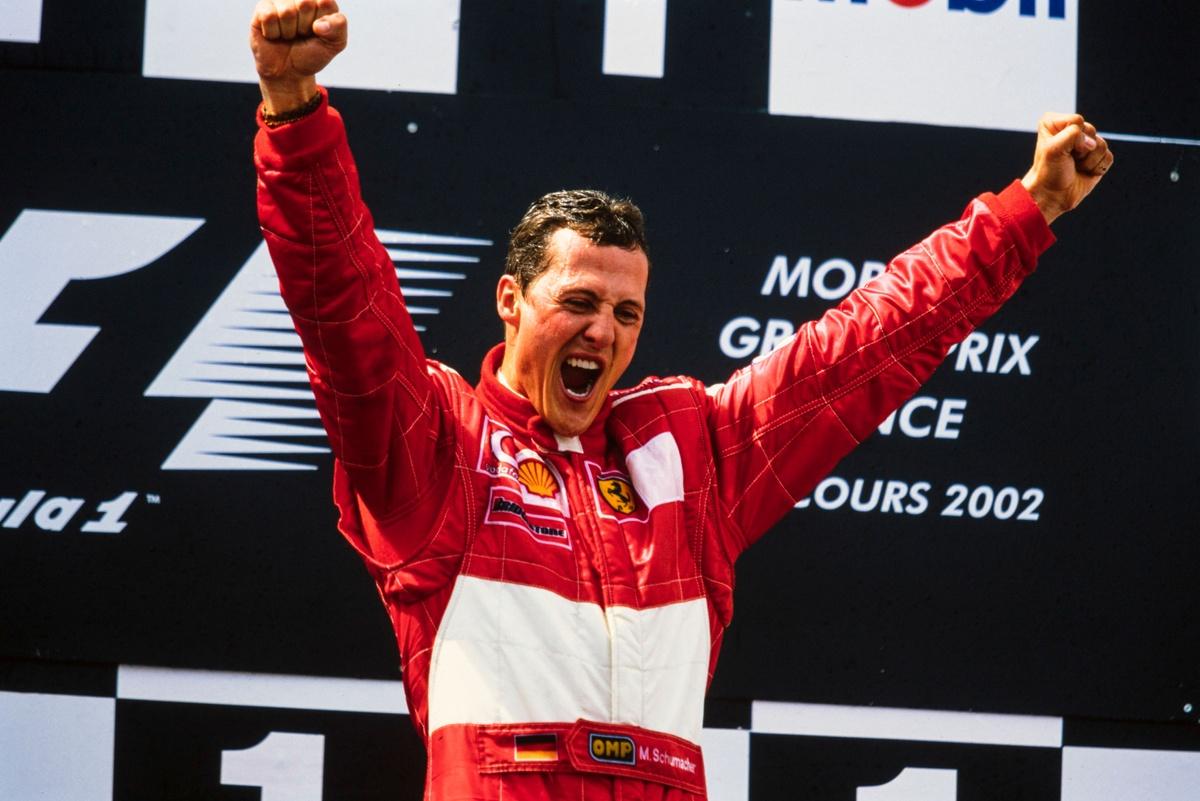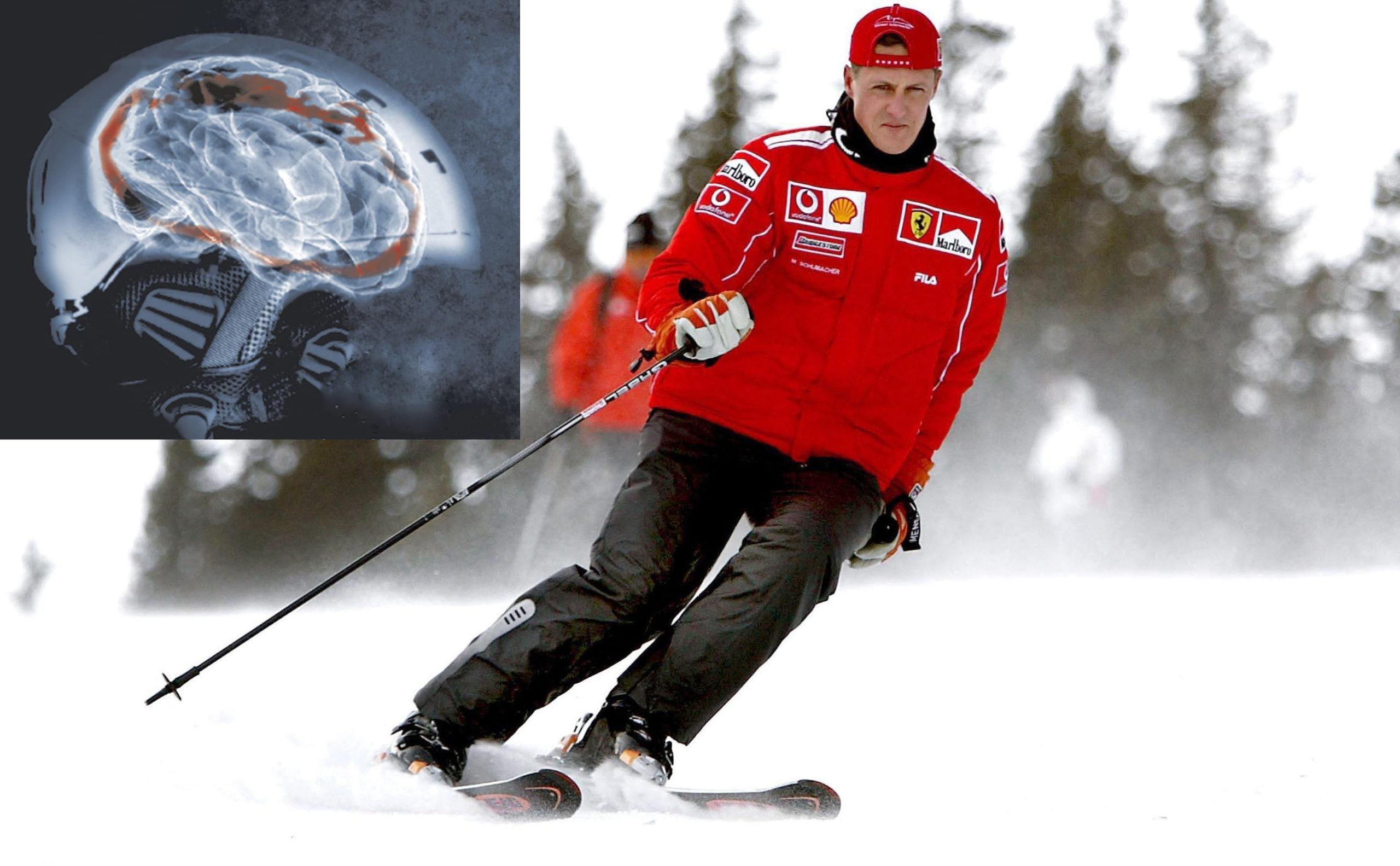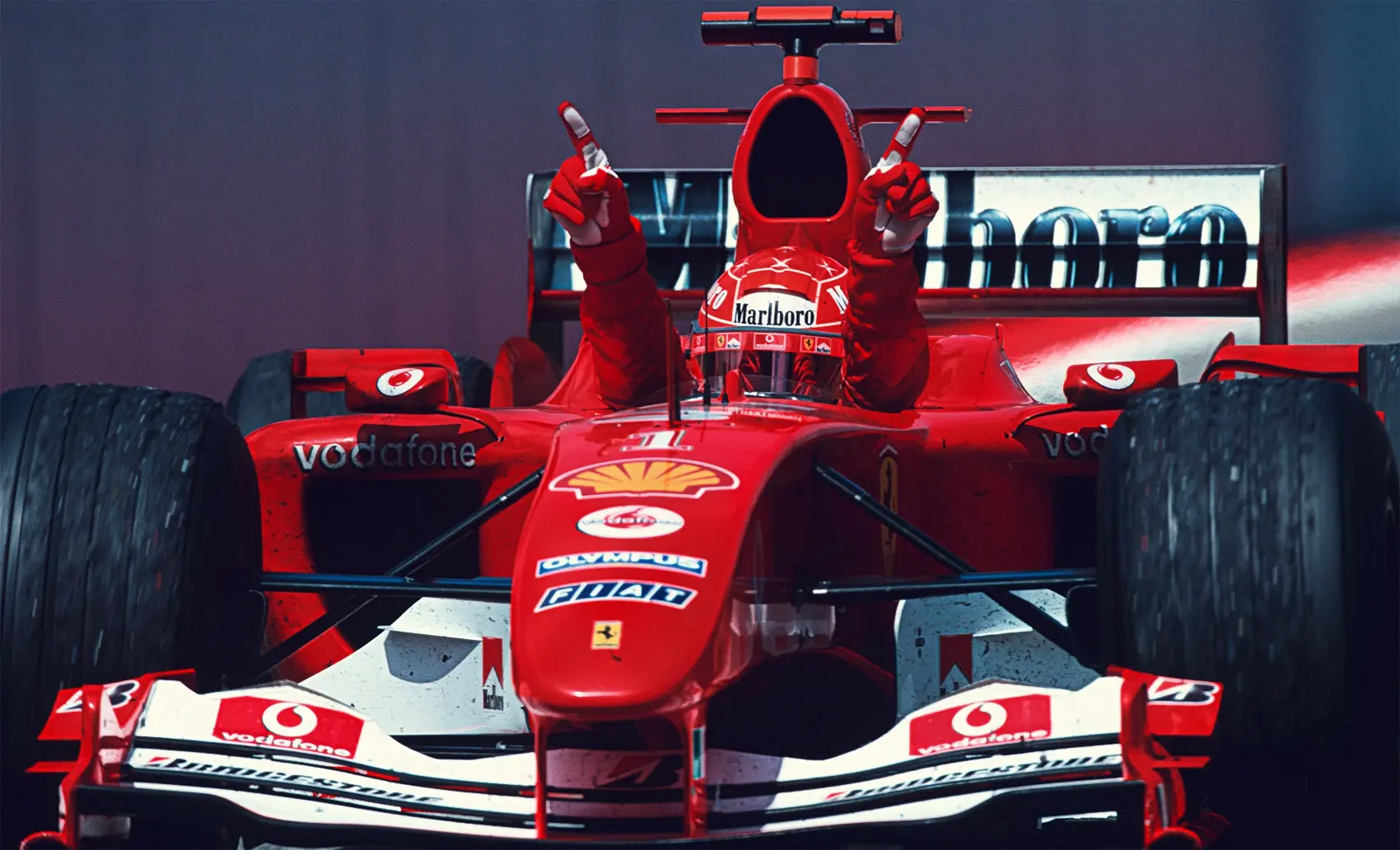In the pantheon of Formula 1 legends, few stories are as harrowing, dramatic, and defining as Michael Schumacher’s 1999 season—a year marked not by dominance or titles, but by the raw grit of a champion battling against the frailty of the human body. That summer, a violent crash at Silverstone nearly ended his career, and perhaps his life. What followed was not just a physical recovery, but a resurrection of spirit that further cemented Schumacher’s place as one of the greatest drivers in motorsport history.

The incident occurred on July 11, 1999, during the opening lap of the British Grand Prix. As Schumacher approached Stowe Corner at over 200 km/h, his Ferrari suffered catastrophic brake failure. The German driver veered off-track and plowed straight into the barriers in a horrifying impact. The collision was violent and immediate—metal crumpled, tires flew, and Schumacher remained motionless inside the wreckage. The world held its breath.
Moments later, medical teams confirmed the worst: Michael Schumacher had sustained a broken right leg. Not just a fracture, but a clean, brutal break of the tibia and fibula. His season was effectively over. Ferrari’s championship hopes, already hanging by a thread, seemed doomed. For Schumacher, whose career had been defined by control, precision, and power, the loss of his mobility was more than just physical—it struck at the core of his identity.

But Michael Schumacher was not built for surrender. Even from his hospital bed, the wheels of recovery were already turning. Doctors recommended months of rest. Schumacher demanded weeks. Under the care of a specialized team in Switzerland, he began an intense rehabilitation program. By mid-August, he was already walking with support. By September, he was preparing to test in Fiorano. The recovery, as miraculous as it seemed, was no accident—it was the result of sheer mental fortitude and an almost inhuman threshold for pain and discipline.
While Eddie Irvine carried Ferrari’s campaign forward, the team remained off-balance. It was Schumacher who returned—not for his own championship chances, which were gone—but to help Ferrari secure their first Constructors’ title in 16 years. His comeback at the Malaysian Grand Prix on October 17 was nothing short of sensational. Not only did Schumacher return to the grid, he dominated qualifying, finishing nearly a second ahead of his rivals. Though he stepped aside for Irvine in the race to aid Ferrari’s title bid, it was clear to the world: Michael Schumacher was back, and stronger than ever.

The final race in Japan saw Ferrari narrowly miss the Drivers’ Championship, but the message had been delivered. The 1999 season would not be remembered for the crash alone, but for the astonishing will of a man who refused to let shattered bones define his destiny. More than a comeback, it was a declaration.
Michael Schumacher’s ordeal in 1999 became a pivotal moment in his legendary career. It showcased a side of the seven-time world champion that no statistic can measure—his refusal to yield, even in the face of unimaginable pain and overwhelming odds. His recovery not only inspired his team and fans but set a new benchmark in the sport for resilience, leadership, and courage.
In the years that followed, Schumacher would go on to win five consecutive titles with Ferrari, but the seeds of that dominance were planted in the dark days of 1999. Through blood, broken bones, and relentless pursuit of glory, Michael Schumacher proved that true champions are not only defined by victory—but by how they rise when the race seems lost.





